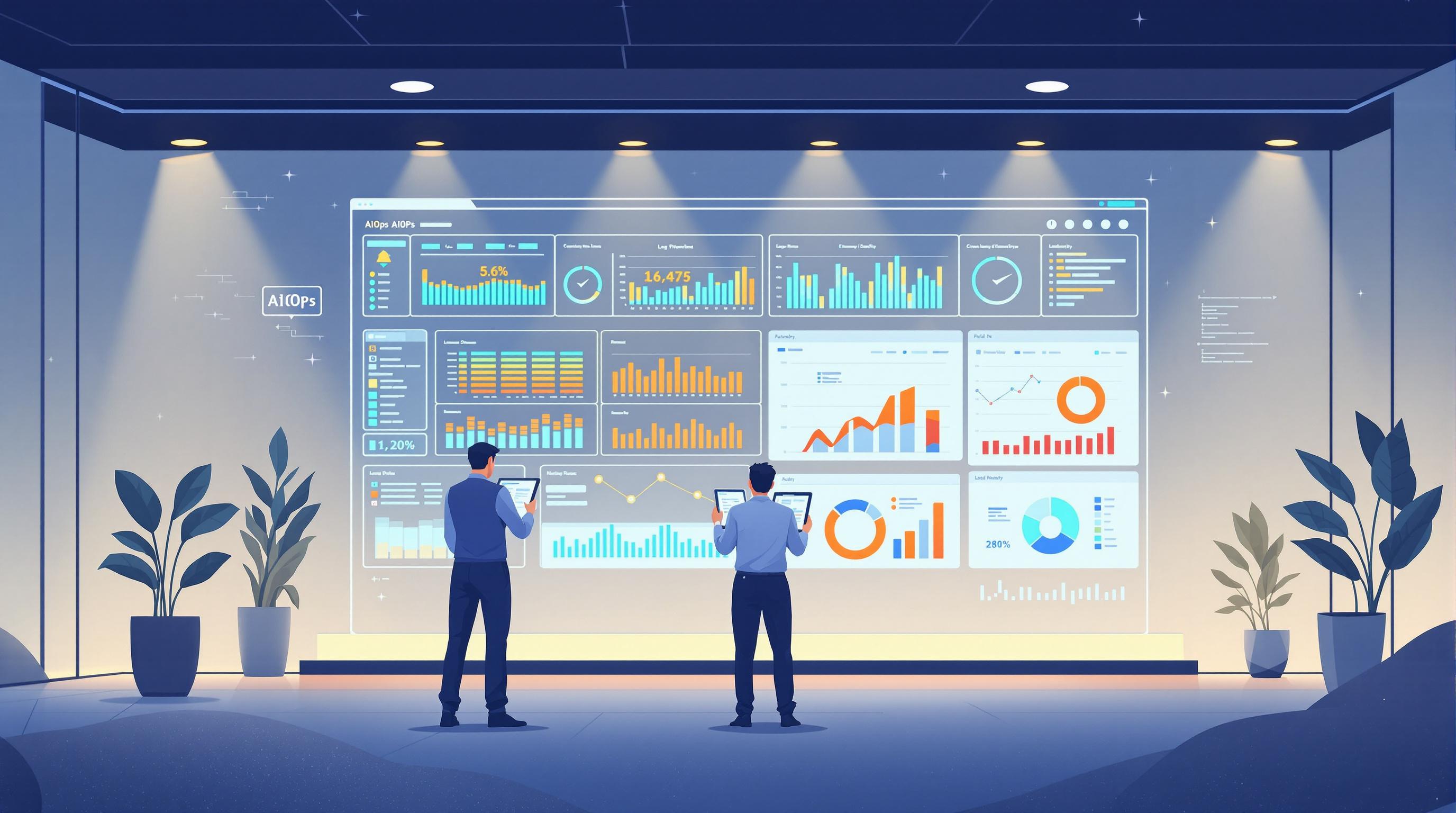As modern software development grows more complex with various moving parts, the importance of observability tools becomes increasingly clear. With many professionals already championing observability, the conversation has shifted from "Do you need an observability tool?" to "Which observability tool is right for you, and why?"
This article explores two popular observability tools, Datadog and Eyer, highlighting their unique features. The aim is not to pit one tool against the other but to help you identify which might be the best fit for your organization. We will compare them across seven categories:
- Automated observability with artificial intelligence
- Out-of-the-box correlation
- Maintenance
- Integration with your organization's existing tools
- User interface and experience
- Community
- Pricing
Here is a brief comparison of the key features between Datadog and Eyer.

Automated observability using artificial intelligence
Datadog is a powerful observability platform known for its robust monitoring capabilities. It offers key features like anomaly detection, infrastructure monitoring, and log management. One of Datadog's strengths is its customizable user interface, which allows you to create dashboards to visualize your data easily.
However, for anomaly detection and automated observability, Datadog requires a higher degree of customization. A lot of its alerting process mainly relies on defining thresholds, meaning you must set specific triggers for alerts. This is great for teams that prefer full control over their monitoring setup, allowing them to fine-tune alert settings to match specific operational needs.
Eyer, like Datadog, is an AI-powered observability tool that offers anomaly detection, infrastructure monitoring, and seamless integration with your preferred tools. However, Eyer takes a different approach by providing a more automated system for anomaly detection. It automates the observability process, from reconfiguration to alerting, establishing baselines using historical data, and accurately detecting anomalies without manual configuration or thresholds.
Ultimately, if your organization prefers a more hands-on tool where you customize alerts for every metric, Datadog is a strong choice. However, if you’re looking for automated observability that leverages your systems' understanding of themselves, Eyer offers a compelling alternative.
Out-of-the-box correlation
In anomaly detection, correlation refers to the relationship between different data points, metrics, or variables, indicating how they influence one another. Identifying correlations is crucial for spotting patterns, understanding dependencies, and aiding in root cause analysis (RCA).
To define the relationship between data points (correlations) in your system, Datadog uses a correlation approach that relies on users tagging their data to link related metrics, logs, and traces. This method allows users to organize and filter data manually based on custom tags, enabling correlation across different infrastructure components.
In contrast, Eyer automates the correlation of your metrics. This reduces the likelihood of human error and eliminates the need for complex setups. As a result, it's easier to uncover insights and manage correlations efficiently.
Automated maintenance
In software development, environments are constantly changing, and for observability tools to remain valuable, they must adapt to these changes.
Datadog combines automatic learning with manual configuration. While its anomaly and outlier detection will adapt to new environments, users often need to manually reconfigure tags for organization and correlation and set up new alerting rules, thresholds, and other configurations.
Eyer, in contrast, automatically learns patterns, establishes baselines, and alerts users. If your environment undergoes changes or evolution, Eyer adapts to detect deviations from its learned baselines, enabling it to identify anomalies without manual intervention.
Integrate with your existing IT assets.
Another important feature of any observability tool is its ability to watch over and report on platforms and environments your organization uses.
Datadog, for example, has been around for over a decade. During that time, they have built a comprehensive solution that offers integration support for a wide range of your favorite tools and environments, providing you insights on your servers, cloud services, and more. This ensures that you can maintain a unified view of your entire infrastructure, helping you to identify issues faster and optimize performance across the board.
Similar to Datadog, Eyer supports a wide range of platforms and technologies. The tool uses the popular open-source collector Telegraf, which supports 300+ plugins, enabling seamless data collection and analysis from various sources.
User interface
The user interface (UI) of an observability tool affects how users can interact with and extract value from the platform. Both Datadog and Eyer offer distinct approaches to UI design, catering to different preferences and workflow requirements.
Datadog features a proprietary, intuitive graphical user interface (GUI) designed for infrastructure monitoring and management. This interface includes dashboards, customizable alerts, and rich visualizations, making it easy to identify issues and gain valuable performance insights.
In contrast, Eyer is a headless AIOps observability tool, meaning it doesn't have its GUI for direct interaction. Instead, it integrates seamlessly with your preferred tools, such as Grafana, to leverage their specialized capabilities. Grafana’s exceptional dashboarding allows you to create custom visualizations using various graph types, like heatmaps and time series.
Community
A strong community can be a significant asset when choosing an observability tool, offering support, shared knowledge, and a wealth of user-generated content.
Datadog has been around for a decade, and during these years, they have amassed a large community of people who support and provide community-generated content and answers to queries that you might have.
Eyer, in comparison, is a newer observability tool with a relatively smaller user base but a rapidly growing community.
Transparent pricing
When assessing observability tools, it's important to consider the pricing structure, as it can significantly impact your budget and financial planning.
Datadog is known for its complex pricing model, which can make costs less predictable and potentially higher depending on the features you use and the scale of your infrastructure. Additional charges for metrics, logs, and premium services can add up, and these costs may not be immediately clear when you first sign up.
On the other hand, Eyer offers a more straightforward and flexible pricing structure. It provides a clearer understanding of your monthly expenses from the outset and makes it easier to assess if it fits within your team's budget.
Understanding the right tooling for you
This article has examined two prominent observability tools, particularly relevant in artificial intelligence and extensive automation.
We looked at Datadog, a well-established observability tool with over a decade of experience, and Eyer, a new, AI-powered observability tool, built specifically to cater to the new age of applications. Datadog provides a wide range of services like infrastructure monitoring, log management, and security monitoring, while Eyer offers infrastructure and processes monitoring and anomaly detection for any KPI and data metric you need to monitor in your tech stack.
However, Datadog pales in comparison to Eyer when it comes to automation. Many of its features, such as anomaly detection and data correlations, still require manual configuration of alerting thresholds and tagging. This can lead to inefficiencies if tagging is inconsistent or incorrect, potentially causing gaps in visibility and complicating issue diagnosis. Additionally, manually setting static thresholds can be cumbersome for teams managing diverse environments and services.
In contrast, Eyer is designed with automation in mind. It provides insights into system status and issues without requiring manual input or threshold configuration. However, as a newer tool, Eyer currently supports fewer technologies than Datadog.
Depending on your organizational needs, if you prefer a more customizable and hands-on approach to monitoring, Datadog may be a good fit. However, if automation and AI-driven insights are priorities for your team, Eyer offers a forward-thinking alternative that can streamline your observability process with less manual overhead.
For more information on AI-powered observability, check out the official Eyer documentation.



